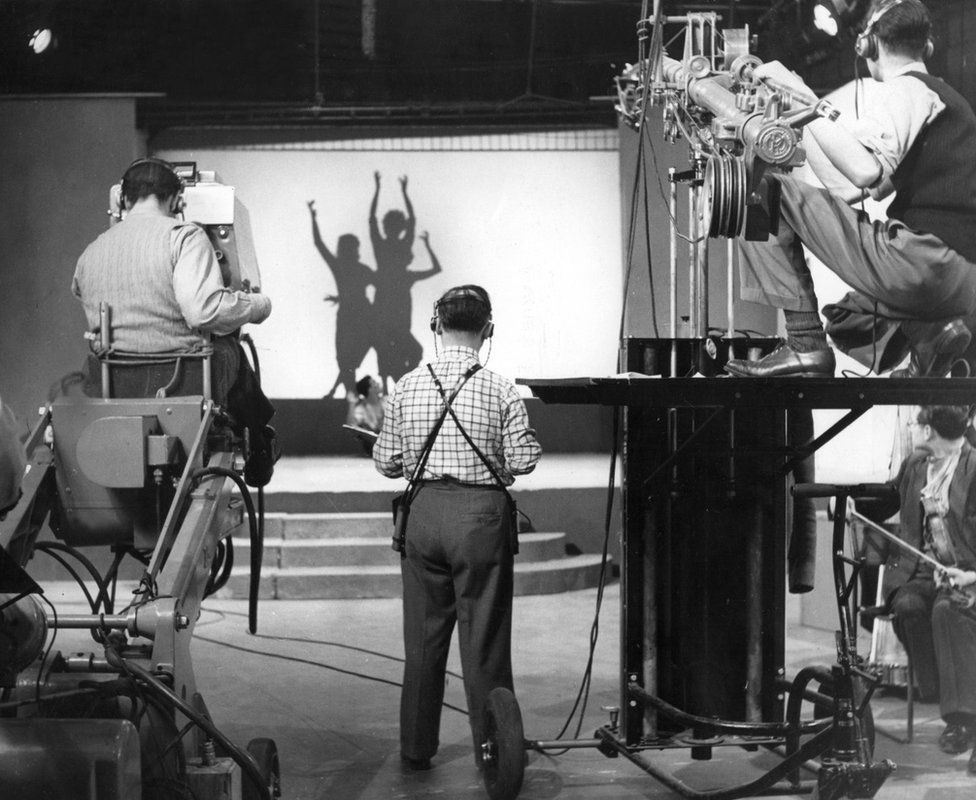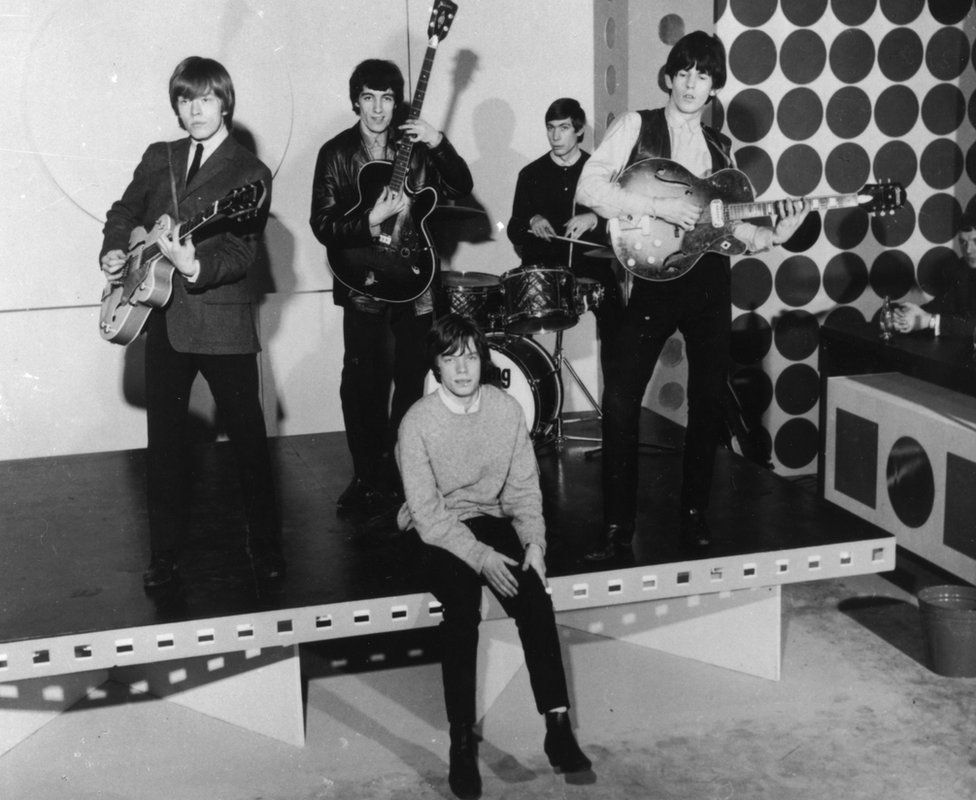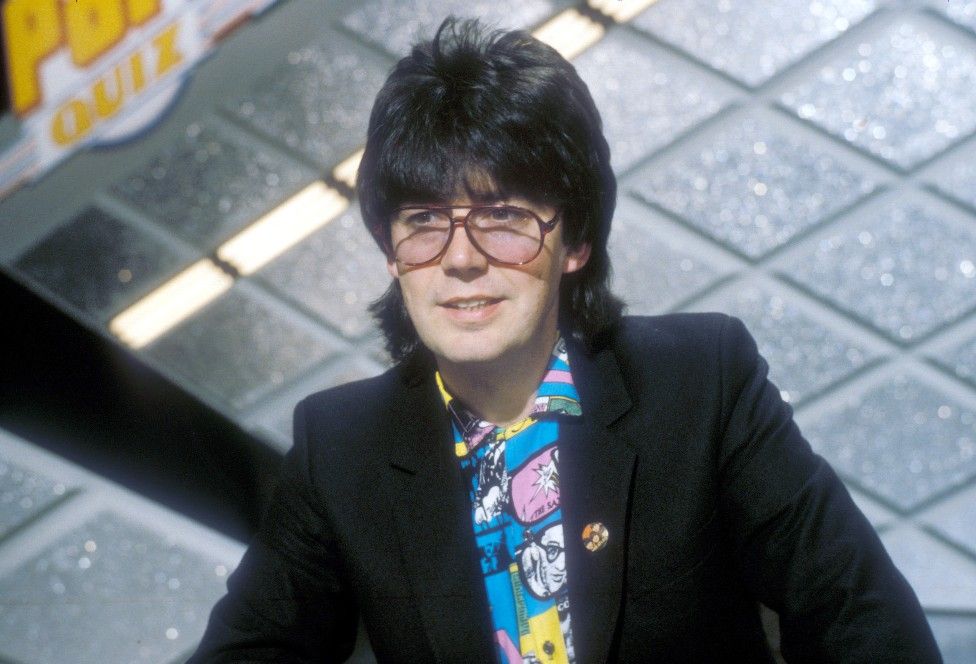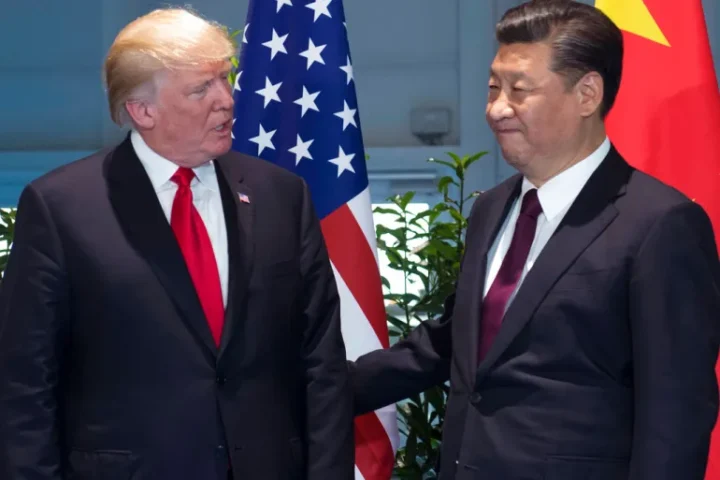“It’s Thursday night, it’s seven o’clock, it’s Top Of The Pops!”
To pop fans of a certain age, that phrase is dopamine rush. It means homework can be forgotten, the weekend is tantalisingly close, and pop music is about to happen in our drab 1980s living room.
If you’re lucky, you might even catch a glimpse of your childhood crush, Cheryl from Bucks Fizz, who seemed like she’d definitely want to visit your house for a game of Connect 4 (OK, maybe that part was just me).
Top Of The Pops ruled the roost for 42 years, introducing the UK to Marc Bolan, David Bowie, Madonna, The Stone Roses and the Spice Girls, in an era when pop music was still scarce and exotic.
But TOTP, as no-one ever called it outside of the print media, wasn’t the BBC’s only dalliance with the charts.
In fact, more than 70 different pop and rock shows have elbowed their way into the schedules since the BBC’s inception 100 years ago.
Here’s a tour of the highlights and low points.
The Countdown to Top Of The Pops

In the BBC’s early years, popular music was squeezed into variety shows and magazine programmes, with classical concerts and opera forming the bulk of the corporation’s music programming.
That changed in 1952, with the debut of The Hit Parade, described by the Radio Times as “the most ambitious attempt yet made to present popular music on the screen in a directly visual way”.
Based on a US format, it featured about eight songs per half-hour episode, played by an in-house band instead of the original recording artists.
Foreshadowing Top Of The Pops, the show highlighted each song’s chart position, with the relevant number built into the staging; while a troupe of dancers called The Stargazers interpreted the lyrics.
It set a template for shows like 1955’s Off The Record, where Buddy Holly made his only UK TV appearance; and 1959’s Drumbeat, “30 fast-moving minutes of music in the ultra-modern manner, that will make the old-fashioned ‘rug cutters’ feel like members of a knitting circle”.
But it was The Six-Five Special (1957-58) that marked the BBC’s first real attempt to bring rock and roll to the small screen.
It’s biggest innovation was allowing the audience to roam the studio floor, instead of sitting attentively in tiered seating, giving the show the kinetic energy of a concert.
https://emp.bbc.com/emp/SMPj/2.46.12/iframe.htmlMedia caption,
Six-Five Special burst onto the television on Saturday evening, 16 February 1957.
The show was hosted by Radio Luxembourg DJ, Pete Murray, who came up with the catchphrase “Time to jive on the old six-five” – a play on its Saturday night time slot, 6:05pm.
However, Murray almost didn’t get the gig, with a young Scottish bodybuilder coming a close second in auditions.
Producer Jack Good later stood by his decision. “I think I was right,” he told TV historian Jeff Evans. “Sean Connery turned out to be great as James Bond but I didn’t think he was cut out for introducing pop music.”
Six-Five Special fell apart when the BBC insisted on adding educational segments, prompting Good to quit for ITV, where his non-stop music show Oh Boy! trounced Six-Five Special in the ratings.
Replacements included 1958’s Dig This!, 1963’s The 625 Show (where the Beatles made their TV debut) and 1961’s Hot Ice and Cool Music which took place, for no apparent reason, on an ice rink.

Top Of The Pops finally debuted on New Year’s Day 1964, broadcast from a converted church in Manchester.
Initially commissioned for six episodes, its gimmick was to focus solely on songs that were climbing up the Top 40; with each programme culminating in the week’s number one single.
In doing so, it gave equal weight to global pop stars, ground-breaking new artists, anodyne family favourites and cheesy novelty nonsense.
A typical episode from 1978 saw punk upstarts The Boomtown Rats sharing airtime with Father Abraham and the Smurfs. Tonal consistency was neither offered nor desired.
https://emp.bbc.com/emp/SMPj/2.46.12/iframe.htmlMedia caption,
A selection of Top of the Pops’ opening titles
Dusty Springfield was the first ever artist to perform, playing I Only Want To Be With You, followed by the Rolling Stones’ rambunctious I Wanna Be Your Man.
The Beatles’ I Wanna Hold Your Hand was that week’s number one, but the band weren’t available to perform, so producer Johnnie Stewart put together a montage of archive footage, newsreels and still images to accompany the song.
While other shows prioritised live music, Top Of The Pops’ focus on the singles chart meant it could unashamedly allow artists to mime. In the beginning, they would even show a female assistant putting a needle on the record before bands stated playing.
A staple of the schedules, The Pops ran for 2,271 episodes, going colour in 1969, expanding to 45 minutes in 1970, and generating a spin off show, TOTP2, in the 1990s.
Memorable moments include Neneh Cherry performing Buffalo Stance while seven months pregnant; Nirvana sabotaging their performance of Smells Like Teen Spirit; and David Bowie suggestively draping his arm around Mick Ronson during Starman – a watershed moment in pop that introduced a generation to androgyny.
https://emp.bbc.com/emp/SMPj/2.46.12/iframe.htmlMedia caption,
David Bowie performs Starman on Top of the Pops
The show ended in 2006 after falling viewing figures prompted a move to BBC Two and, ultimately, complete cancellation. The final number one on the final programme was Shakira’s Hips Don’t Lie.
But the Christmas special has somehow survived, and archive editions are repeated on BBC Four. However, the show’s long association with Jimmy Savile means that many episodes are now unbroadcastable.

Hit or Miss – panels, discussions and quiz shows

Where there’s music, there’s music trivia. And where there’s trivia, there are disputes. And disputes makes great television.
The BBC cottoned onto this early on, with Juke Box Jury (1959-67, plus revivals in 1979 and 1989), where celebrity panellists and the studio audience would debate the merits of the week’s new releases before declaring them a “hit” or a “miss”.
Host David Jacobs was not particularly enamoured with the format, saying the first episode was “so very dreadful that by the middle of it I was wishing I could just get up and go”.
But viewers disagreed. At its peak, the show attracted 12 million viewers, rising to 23 million for a special edition with The Beatles as the panellists.
The Fab Four unanimously voted The Swinging Blue Jeans’ Hippy Hippy Shake a “hit” but declared The Orchids’ Love Hit Me a “miss”, only to discover the band were in the studio – something John Lennon described as “a lousy trick”.
Juke Box Jury 1960: Are Frank Sinatra and Pinky & Perky a “hit” or a “miss”?
Digesting the musical themes of the day was also integral to See You Sunday (1973-75), which looked at the religious themes of songs by Cat Stevens and Randy Newman.
And BBC Two’s Something Else (1978-82) was presented by a team of inexperienced but earnest teenagers, who discussed social issues like unemployment, alcoholism and arranged marriages against a backdrop of music.
It attracted a huge following in the punk and indie scene, with bands like The Undertones, The Clash, Siouxsie and the Banshees playing live; and Paul Weller taking charge of an entire episode, devoted to the topic of inequality.
A discussion on fashion also featured an early TV appearance by George O’Dowd, before he rechristened himself as Boy George.
Boy George makes his TV debut on Something Else
On a lighter note, kids TV had Cheggers Plays Pop (1978-86) in which human Duracell bunny Keith “Cheggers” Chegwin would pit children against each other in a battle of musical knowledge (“True or false, Cameo’s hit is called ‘Fed Up’?”), interspersed with inflatable assault courses and copious amounts of shaving foam.
Primetime TV also got Mike Read’s Pop Quiz (1981-84) and its petulant offspring Never Mind The Buzzcocks (1996 – present day).
The latter is best known for its “intros round”, where two panellists perform an a wordless rendition of a popular song for their teammate to guess. If you haven’t seen Adele humming N*E*R*D’s Lapdance to a bewildered Tim Minchin, you haven’t lived.






